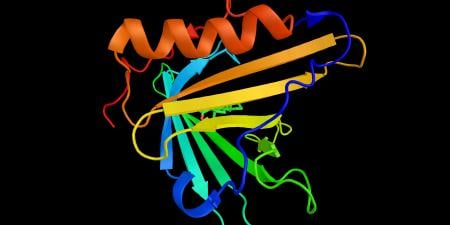Case
While delivering Mrs. Burdett’s third child, her obstetrician observed that the baby had ambiguous external genitalia; on the evidence of the labioscrotal folds and incompletely formed penis or clitoris, the baby’s sex could not be determined on sight. The obstetrician calmly answered the Burdetts’ question about whether their new baby was a boy or a girl by saying that some further examination would be needed. Then he called in Dr. Leclerc, a pediatric endocrinologist, to explain the situation to the Burdetts and help them decide on their next steps.
Genetic tests performed the next day revealed that the baby had a 46,XY karyotype. Based on this and on the ratios of testosterone to luteinizing hormone and to dihydrotestosterone, the Burdett newborn was diagnosed with partial androgen insensitivity syndrome (PAIS). When the Burdetts learned of the diagnosis, they were sad and nearly speechless. Neither had ever heard of such an occurrence before. Dr. Leclerc told them that the condition was not extremely rare and that parents of babies born with PAIS had taken a variety of approaches; some parents designated a sex for the newborn immediately and had surgery performed on the external genitalia if necessary. Other parents chose to wait until the child grew some and developed characteristics that appeared to favor one gender identity over another. But Mr. Burdett protested, “I don’t understand. If our child has XY genes why doesn’t that make him a boy?” Dr. Leclerc had been asked these questions before and knew that an overly medicalized answer would not be satisfying. He told the Burdetts that the decision about how to treat a child with PAIS was complicated by many factors beyond DNA and hormones. Understanding that Mr. and Mrs. Burdett were devastated by the confusion over their newborn’s sex, Dr. Leclerc wanted to give them all the information and options he could without making the process even more difficult. He knew, though, that most parents in the Burdetts’ position ended up asking him what he would do if the child were his.
Commentary 2
The obstetrician and Dr. Leclerc have handled this difficult situation well by maintaining a calm and honest approach with the parents over the newborn child's ambiguous sex. The first order of business in the management of this child’s care should be to make a definitive diagnosis of the specific intersex disorder. Based on karyotype and endocrine studies, the child appears to have a partial androgen insensitivity syndrome. This diagnosis can be further confirmed by PCR analysis of venous blood for chromosomal abnormalities of the androgen receptor. One means of explaining the abnormality to parents is to tell them that, despite an 46,XY karyotype and the presence of a male hormone, the tissue is unable to "recognize" the hormone as it would under normal circumstances.
Findings from the physical examination and work-up need further clarification. The presence and position of gonads should be defined. The size and anatomy of the penis/clitoris and labioscrotal folds should also be determined to confirm the degree of virilization, and an abdominal ultrasound should be done to confirm absence of mullerian tissue.
The management issues for this newborn include sex assignment and appropriate treatment of the gonads and external genitalia. Partial androgen insensitivity, unlike complete androgen insensitivity, is an intersex condition for which no general consensus exists as to the better sex assignment. In other words, either sex may be assigned based on the anatomic findings. Indeed, a recent study of a modest number of partial androgen insensitivity patients raised as male or female demonstrated long-term satisfaction with either sex assignment.1 Thus, more than 1 scenario is possible with this patient. One option may be to assign sex in the newborn period and carry out sex-appropriate surgical reconstruction.
If the decision were made to assign male sex to the child, hypospadias repair and scrotoplasty could be performed at 10 to 12 months of age. Undescended testes would require orchidopexy at this time. Although infertility is anticipated with partial androgen insensitivity, the potential for assisted reproductive techniques would be preserved.
If female sex were assigned, female genital reconstruction and gonadectomy could be performed after 6 months of age. The child would be infertile, and estrogen replacement would need to be started at the appropriate time to initiate puberty.
An alternative approach is to delay surgery for as long as possible with the hope that the child may develop a gender identity. In cases such as this, one could remain neutral until the time of anticipated puberty. Once pubertal stimulation occurs, however, the child would be virilized by the existing testes and a female sex assignment would be forever compromised. So, realistically, a relatively early decision must be made.
There are, however, risks to surgical reconstruction, the major one being an irreversible alteration in anatomy that may prove to be inconsistent with the child's developing gender identity. The technical outcomes of early reconstructive surgery have been criticized in some studies, but techniques have steadily improved, and an operation performed 30 to 40 years ago bears little resemblance to the surgery being performed today. Thus, surgical outcomes research based on the current adult population is imperfect, at best. There are also risks to deferring surgery, independent of pubertal virilization. The psychological consequences of being genitally ambiguous until age 10 or 11 is unstudied, but there has been wide speculation of distress associated with lengthy delays. Whichever course is taken, a team approach to managing Baby Burdett—including endocrinologists, urologists, and psychiatrists—is highly recommended.
Ethical Concerns
The ethical issues raised by a case of partial androgen insensitivity include respect for autonomy and surrogate decision making, the meaning of informed consent, conflict between autonomy and beneficence, and veracity on the part of the treating physicians. The newborn with ambiguous genitalia must be regarded as a nonautonomous patient with the potential for autonomous decision making. Thus, appointment of a surrogate decision maker—most likely the parents—is necessary for decisions related to the infant's care with the understanding that, upon sexual maturity, the child will have developed a gender identity and gender orientation (choice of sexual partner). These gender decisions are unpredictable and may differ from the sex assigned by the parents and medical team years before. The standard most commonly applied by a surrogate for the pediatric patient is the "best interests standard," but in cases as complex as these, predicting what will be in the best interest of the future child is challenging for parents. This places a burden on the treating physicians to educate the parents sufficiently so they can act as responsible surrogates, capable of providing informed consent.
In a previous era, under the paternalistic model of a physician-patient relationship, physicians assumed a large—perhaps too large—a role in decision making for the infant. This attempt at beneficence usurped autonomy from the parents and has been a source of anger and frustration to some families many years after the treatment decisions were made. Honesty and good clinical judgment on the part of the treating physicians are essential for a trust-based relationship with the parents and, ultimately, the child. With these children, for whom medical science may be incapable of assuring a "right approach," physician transparency and humility seem especially appropriate. In addition, ongoing mutually trust-based relationships between the treating physicians and the maturing patient are critical in respecting the autonomy of the patient and avoiding the anger and shame experienced by some intersex patients whose diagnoses have been forced to remain secretive.
References
- Melo KF, Mendonca BB, Billerbeck AE, et al. Clinical, hormonal, behavioral, and genetic characteristics of androgen insensitivity syndrome in a Brazilian cohort: five novel mutations in the androgen receptor gene. J Clin Endocrinol Metab. 2003;88(7):3241-3250.



